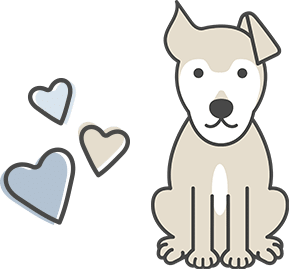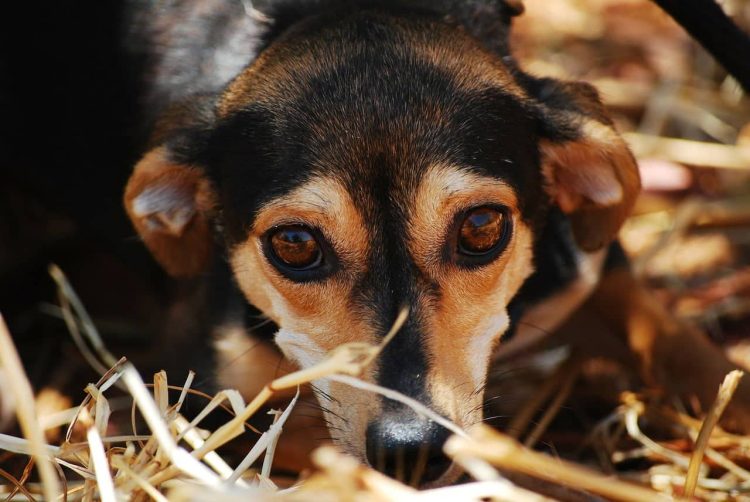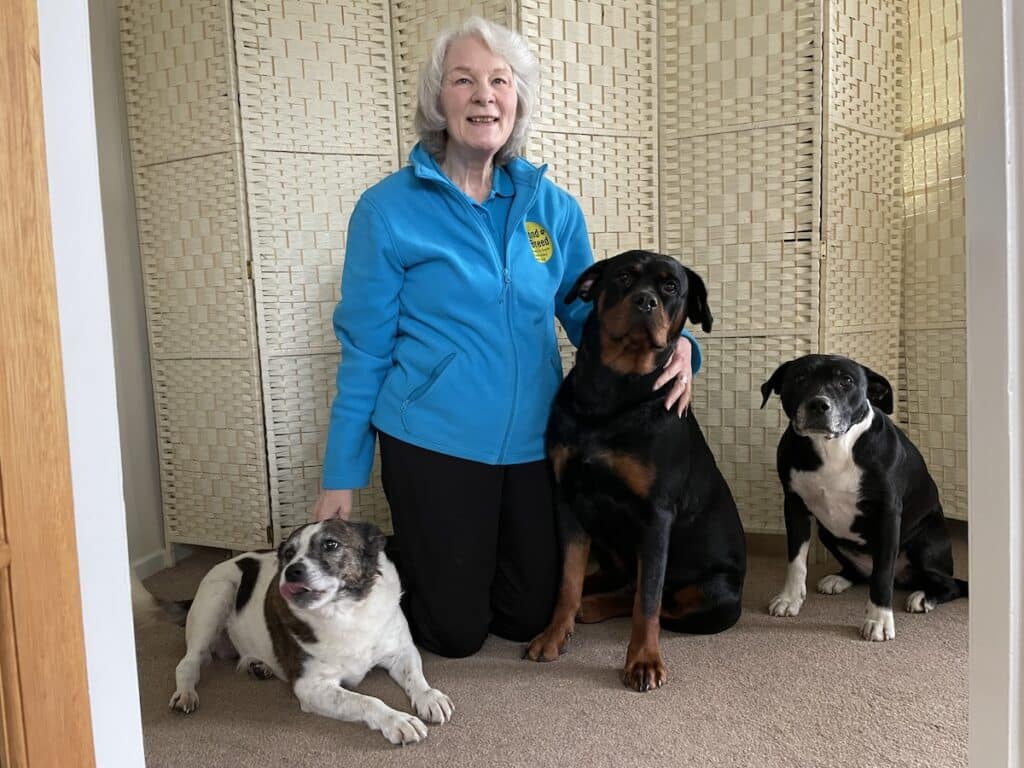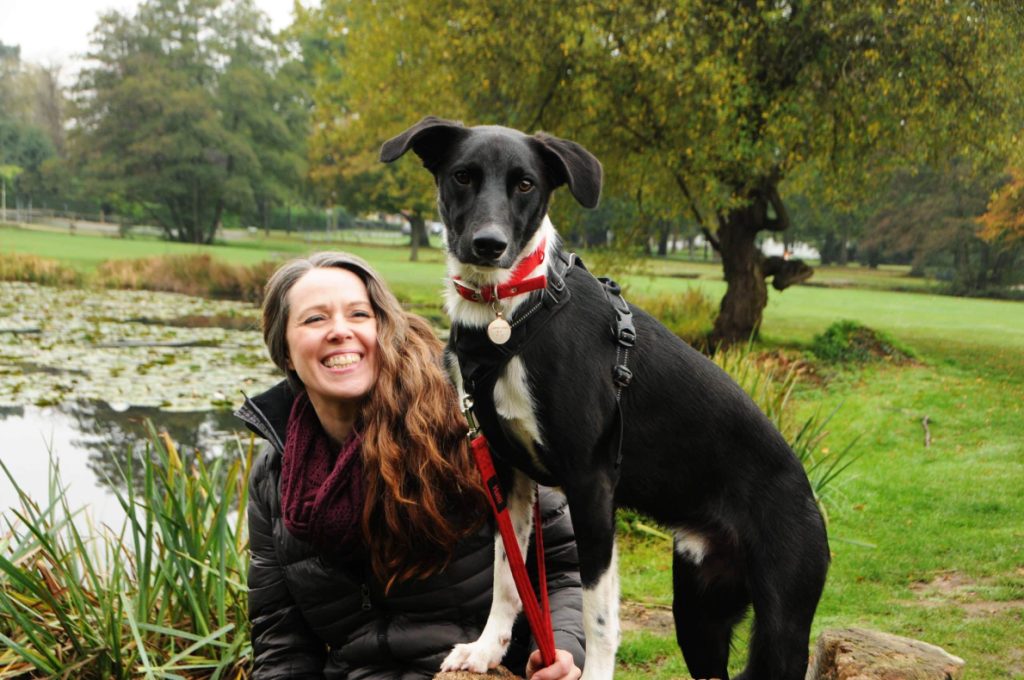As our lives get busier, the rise in anxiety in humans is well documented
But do you know that our dogs are suffering too?
A survey by Rosewood pet found a third of pet owners said their animal had shown signs of anxiety and the figure for dogs was much higher – 65 per cent.
It’s a worrying statistic and it’s only going to increase as the dog population continues to grow. In the last seven years, it’s risen 20 per cent from 7.5 million to 9 million.
Having cared for an anxious dog, I wanted to find out what owners could do to spot the signs and help their dogs.
So I spoke to expert Helen Motteram, a behaviourist who specialises in helping anxious and nervous dogs who founded Social Paws in 2012.
She has a BSc Honours degree in Animal Behaviour and Welfare and has over 20 years experience of working with dogs.
Helen, 35, from Cheltenham is a provisional member of the Association Of Pet Behaviour Counsellors and a full member of the Institute of Modern Dog Trainers.
While walking a rescue dog who barked at every dog she saw, Helen decided to study the causes of anxiety and has since helped hundreds of pets and their owners.
Here, she explains about what causes anxiety in dogs, why this is on the rise, how owners can recognise the signs and what they can do to help their pets.
It’s a subject very close to my heart so I’m really thankful to Helen for shining a light on this issue.
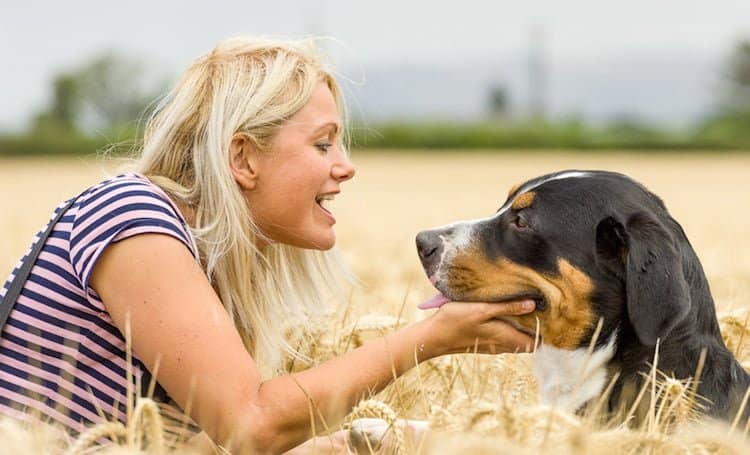
Helen, do you think anxiety in dogs is more common now?
Yes, definitely, 90 per cent of my enquires are to help anxious dogs and it’s due to a number of factors.
We have more dogs are coming from overseas who find themselves in an alien environment which is very stressful for them.
Sadly, dogs are seen as more disposable so there’s an increase in them being rejected and handed in to shelters, which is very upsetting for them.
People aren’t as respectful to dogs as they were. When I was growing up you didn’t go up to a dog on a lead, you respected their space, but that doesn’t happen anymore.
Then you have the issue of disruptive owners. They get a dog, whether it’s a puppy or from a shelter, bring it home, put it with a load of other dogs and expect it to be OK.
We don’t meet up with friends for walks as much. There’s lots of lone dog walkers who go out early in the morning or late after work.
It’s a chore rather than a social engagement. Lots of people have dogs but don’t really have the time for them and this impacts on their emotional wellbeing.
What are the causes of anxiety?
Lots of cases I see are dogs who have had a bad experience as a pup which has an impact in later life.
Puppies are often kept on leads but big dogs run up to them, they can’t get away and this scars them.
Older dogs are usually more robust but sometimes if they’ve been scared or attacked, they understandably suffer with anxiety too.
Because our own lives are so busy, many owners are anxious themselves. They hold the lead tight and their tension is passed on to the dog. I try to encourage owners to relax, to sing to the dog.
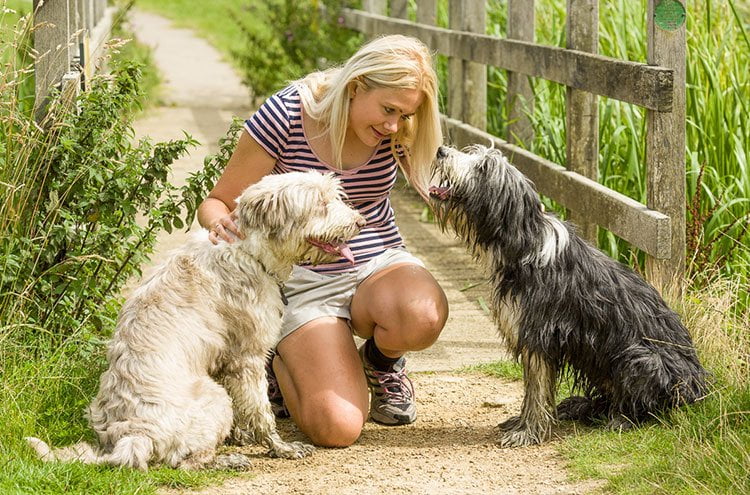
Anxiety is something owners really need to be aware of then?
Yes, it is, the problem lies with owners too. There’s a lack of awareness and education.
People get dogs and they don’t socialise them properly so they don’t know how to behave.
Then they don’t give the dog the help they need.
For example, with dogs who bark to express anxiety, owners either become uptight and avoid other dogs, or allow them to continually bark which only makes them more anxious or frustrated.
So many dogs bound around off the lead and go running up to other dogs and jump on them.
The owner will say, ‘Oh, it’s ok, they’re friendly,’ but to the dog on the lead it’s really frightening. Years ago, if you saw a dog on a lead, you respected their space, but that doesn’t happen now.
What are the signs of anxiety that owners should look for?
Anxiety is expressed in different ways. Some dogs are very quiet so often owners aren’t aware.
They may walk along sniffing the floor because they don’t want to come face to face with another dog as they’re scared of conflict or confrontation.
This behaviour is classed as avoidance or displacement.
It progresses into them showing signs of stress. They might stop and stare or fixate at other dogs, then show the white of their eyes or jump at them.
The next stage is lunging and barking. This is misinterpreted as dominance which is an out of date term, it’s usually really a fight response.
They’re doing it to look big and powerful to get the other dog to move away but really they’re trying to tell the other dog they’re scared and to get out of their space.
They might freeze or they might have the flight response where they try to run away. All are emotional responses because they’re physically afraid.

Case study – Daisy
Daisy was always super confident and loved playing with other dogs.
She came to live with me when she was four and we lost her earlier this year when she was 13.
As she got older, she became less tolerant and more anxious which is often the case with senior dogs.
In the final year of her life, there were very few dogs she would entertain.
Even one of her old friends Sparky who we used to holiday with got the short shrift. She would start by growling and if that didn’t work, she would snap.
The reason was that she was a tired old dog and she didn’t want to play or to have other dogs jump all over her.
Who could blame her? But while out on walks, dogs would bound over and owners would say, ‘Oh, they’re friendly.’
I would find myself yelling at them to call them back and on some occasions I got really angry because Daisy would be stressed and upset.
As an owner, you can’t help but pick up on this and I became anxious too.
While to an outsider it looked like Daisy was being grumpy, she was actually being polite and by growling she was telling them she just wanted to be left alone.
She still loved her walks, so we were mindful to take her to quieter places and led her away from lively dogs.
Having an anxious dog makes you really protective and now, with Patch who is young and lively, I always try to consider other owners and their nervous pets.
If people are reading this and recognising the signs in their dogs, what can they do?
If you see them sniffing or trying to avoid other dogs, give them some space. It’s a cry for help from them.
Lead them away. Over time you can start to gradually get them closer.
In order for them to be more confident, you need to empower them by taking things slowly and ensure they feel safe.
I use learning by positive association. Try to find situations where you see a dog at a distance where your dog is still calm and happy.
Every time they see a dog I would feed a treat so they think ‘dog equals food,’ and learn whenever they see another dog, they get food which is a great thing.
What’s most effective for me is my voice, so ‘good doggy,’ or ‘look at that nice doggy,’ and it’s powerful in easing their anxiety.
Create a positive association, use distance and do it below their threshold, so before the point where they begin to become anxious.
No decent owner would want to see another animal upset so what can those with dogs who aren’t anxious do to help?
Try to put yourself in the shoes of the owner. If you see a dog on a lead assume it’s for a reason. It could be in training, it could be elderly, it could be recovering from an operation or condition.
It’s terribly rude if owners to allow dogs to run over, bad manners on the part of the dog and it puts both pets in danger.
Dogs will naturally approach dogs gradually if they’re well socialised.
If you see a dog on a lead, give them a bit of distance, call over to the owner and try to reassure them, tell them it’s ok and you understand and give them a bit of space.
There is also a Yellow Dog campaign, where anxious dogs wear yellow collars, leads, harnesses and other accessories like bandanas, so the more aware people are of this, the better.
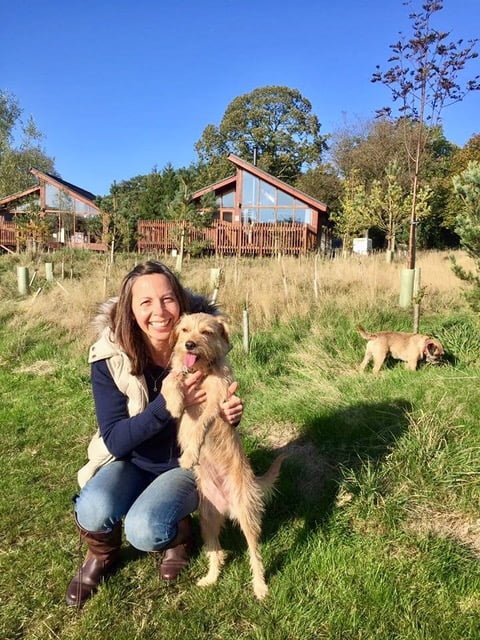
Case study – Sandy and owner Michelle Burgess
I’ve only ever known Sandy to be anxious. I rescued her aged one in 2016 from a horrible pound in Cyprus where she was saved with her mum and siblings.
It’s amazing that she was rescued and cared for but she wasn’t socialised or walked and she was bullied by her sister.
She’s very nervous and her mum was sensitive too. She takes Dorwest supplements which help and I’ve tried many other things.
If we’re in the park and she sees people or dogs and she’s off lead, she will make a large loop around them.
If she’s on her lead, she will move onto the inside of me and keep walking or I’ll take us off to the side and she’ll sit and wait for them to pass.
You can see she’s scared. Her ears go back and she is completely alert to where the people or dogs are.
If a puppy runs up to her when she’s off lead, she hasn’t figured out yet to sit down and she runs away, which makes the puppy think she wants to play! She always comes back to me.
If I see a lot of dogs up ahead, I will change our walk direction away from them, I don’t like to put Sandy in situations where she is nervous if I don’t have to.
There are days when I don’t take her for a walk to give her some proper down time.
I have a Border Terrier, Barney, who I used to take out on his own but now, when I get the leads, Sandy wants to come too. She used to go into her crate so her confidence is growing.
Barney herds dogs away from Sandy to give her space. He’s amazing. He’s not aggressive, he’ll get between Sandy and the dog chasing her so they move away!
I hate it when dogs bound over because I suffer from anxiety too and Sandy can’t get out of the dog’s way. I try very hard to control my anxiety because I know dogs can sense it and to Sandy, I’m her safety net.
I’d ask owners to understand if they see a dog on lead, it’s generally because they need help, or are in training, so don’t take it personally. Please put your dog on lead, or call your dog back, so I don’t have to shout over to you!
Michelle runs www.scruffylittleterrier.com with bespoke gifts for dog lovers.
Owners obviously like to let their dogs off their lead, so for this to happen, recall is vital isn’t it?
Yes, owners need to teach dogs a good recall with distractions. To learn this, start in a low distraction environment like in the home.
You can teach the reflex action to a name and cue. I use the name Fido come, paired with Food.
When I’ve done this many times I then add distance taking two steps back and do the same, and keep adding the distance.
Then you can begin to add distractions such as a toy in the background, so when the dog runs to you, it choses between the food and the toy (hopefully you!)
Teach the dog to come back to you for something that’s more valuable than the distractions around them.
Once you’ve done that, I’d then go to a field and work on a long line first, so if the dog did run, you can get it back.
You have to do it hundreds of times in lots of different environments. If the dog is going to come back to you they have to think you’re the best thing in the world.
With things like squirrels and cats it can be challenging but with time and patience it can be achieved and it gives you both confidence.
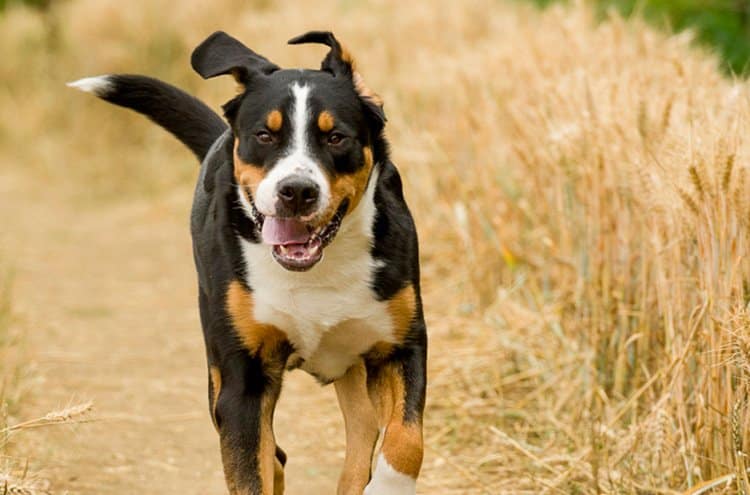
Prevention is the best solution, so what is your advice to avoid a dog becoming anxious?
When owners get a dog of any age, they need to gradually expose it to other dogs in situations where dogs aren’t bullying each other and indulging in inappropriate play behaviour.
With puppies I would recommend having a pre puppy support session with trainer or behaviourist. Once you get the puppy it’s ok to carry them and walk outside to let them see other dogs before their vaccinations so they’re not petrified of people and dogs.
Then begin training in a class of four to six puppies where you gradually introduce them to being off their lead.
With rescue dogs, don’t put them on a lead and walk them as soon as you bring them home. Have at least one or two weeks as a settling in period in the house.
Once you do start walking outside, if they’re friendly great, but if they have issues with other dogs then expose them gradually.
I would prefer people work with a behaviourist or trainer and have controlled meetings with a stooge dog – a quiet dog that assists them – and an additional handler.
The behaviourist will stand with the dog owner and the dog and the additional handler would walk their dog and teach from a distance how to respond to other dogs.
I advise clients they need to work with me for a few months, and I offer ongoing advice. It’s a lot more than one behavioural consultation. Owners need emotional support.
What should owners look for in a behaviourist or trainer?
They need to be force free so using nothing that causes pain or physical harm to dogs like shock or prong collars or slip leads.
I work by using positive reinforcement and would say that if a trainer is talking about pack leadership and dominance I would avoid at all costs
A good behaviourist will always work on recommendation of a vet. They’ll have a strong relationship with them, and ask you to make sure your dog has had a vet check to rule out any potential pain or health issues.
They will be accredited to an official body, be qualified to degree level, have good people skills and offer phone and e mail support.
Look for testimonials – you want to hear people saying that they provided the support they needed as owners are crying out for help and often don’t get it.
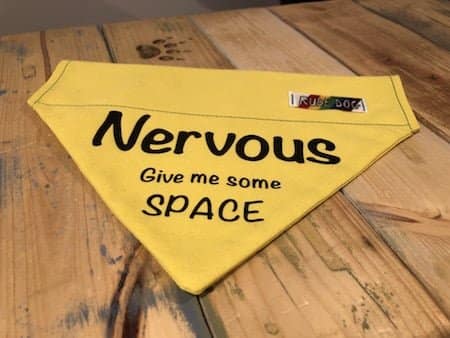
You can find out more about Helen’s work at www.socialpawscheltenham.co.uk and she shares helpful blogs on her Facebook page too.
For further support, Helen recommends the website careforreactivedogs.com and the Reactive Dogs Support UK Facebook page
There’s also the Yellow Dog Campaign where anxious and nervous dogs wear yellow harnesses, collars, leads and accessories like bandanas.
The more people know about it, they less stressful life will be for anxious dogs and their owners, so if you see a dog in yellow, remember they need space.
You can buy accessories at www.bellascollars.co.uk
Rude Dogs provide bandanas for nervous dogs, and different coloured ones for dogs who are blind, deaf, in training, scared of dogs and friendly and you can find them on Instagram here and at The Dog Hoose in Newcastle.
If you’ve found this post helpful, Helen and I would be really grateful if you could share it on social media.
The more people are aware of how to treat anxious dogs, the easier their lives will be.

